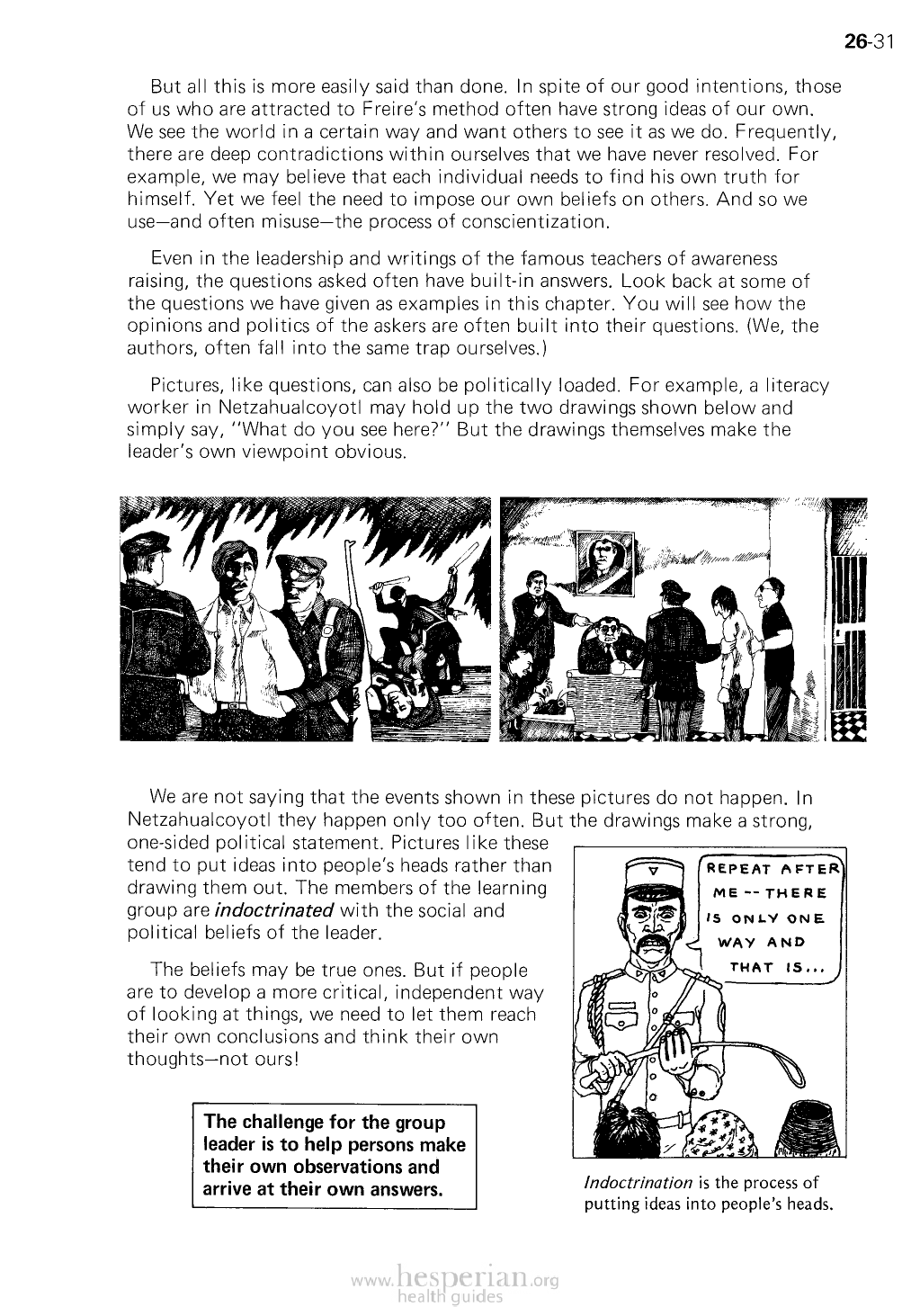
26-31
But all this is more easily said than done. In spite of our good intentions, those
of us who are attracted to Freire’s method often have strong ideas of our own. We
see the world in a certain way and want others to see it as we do. Frequently, there
are deep contradictions within ourselves that we have never resolved. For example,
we may believe that each individual needs to find his own truth for himself. Yet
we feel the need to impose our own beliefs on others. And so we use—and often
misuse—the process of conscientization.
Even in the leadership and writings of the famous teachers of awareness
raising, the questions asked often have built-in answers. Look back at some of the
questions we have given as examples in this chapter. You will see how the opinions
and politics of the askers are often built into their questions. (We, the authors, often
fall into the same trap ourselves.)
Pictures, like questions, can also be politically loaded. For example, a literacy
worker in Netzahualcoyotl may hold up the two drawings shown below and simply
say, “What do you see here?” But the drawings themselves make the leader’s own
viewpoint obvious.
We are not saying that the events shown in these pictures do not happen. In
Netzahualcoyotl they happen only too often. But the drawings make a strong,
one-sided political statement. Pictures like these
tend to put ideas into people’s heads rather than
drawing them out. The members of the learning
group are indoctrinated with the social and
political beliefs of the leader.
The beliefs may be true ones. But if people are
to develop a more critical, independent way of
looking at things, we need to let them reach their
own conclusions and think their own thoughts—
not ours!
The challenge for the group
leader is to help persons make
their own observations and
arrive at their own answers.
Indoctrination is the process of
putting ideas into people’s heads.